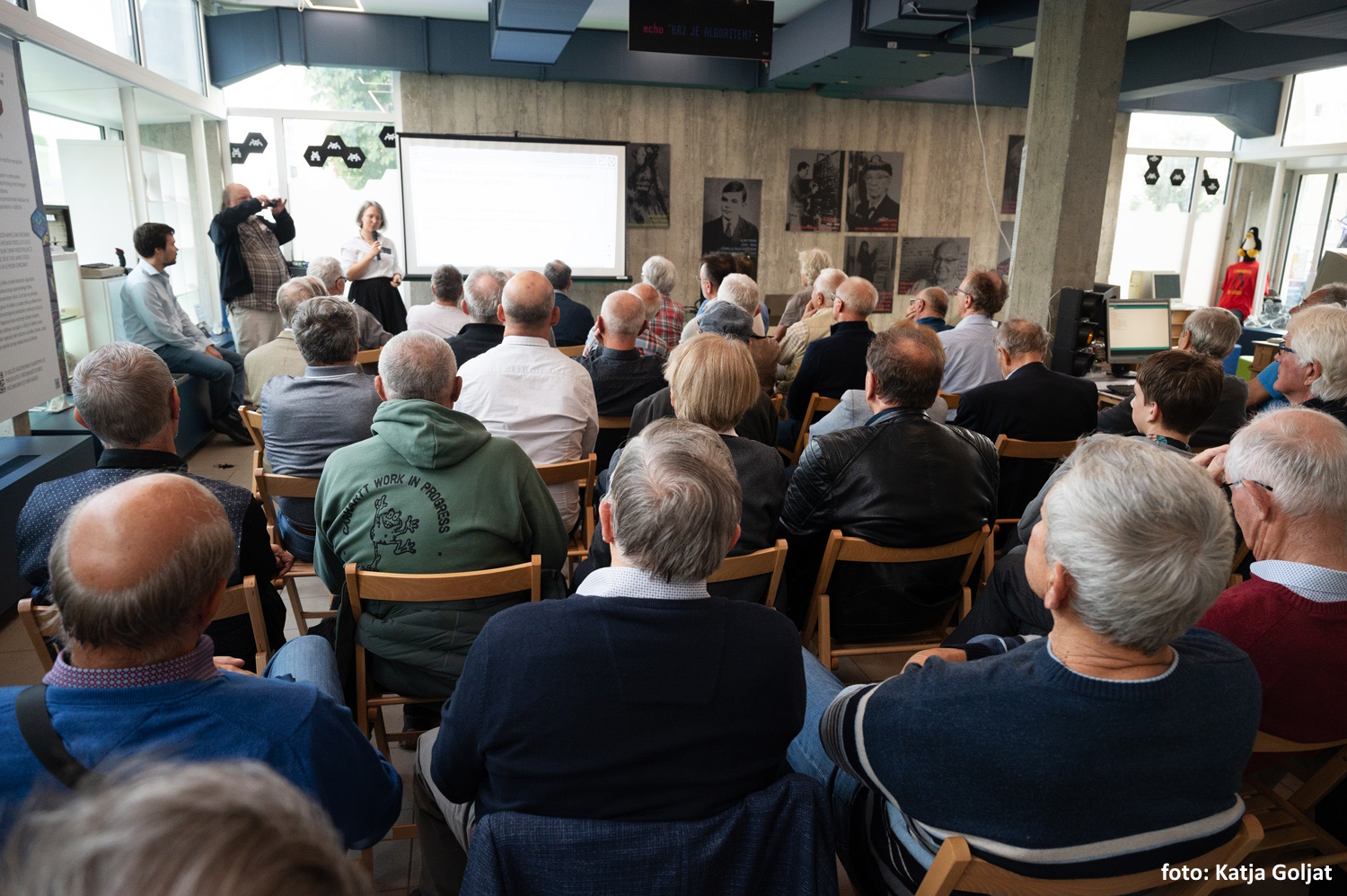On Tuesday, October 1, 2024, at the initiative of the Slovenian Computer History Museum in Ljubljana, the first gathering of Slovenian computing pioneers took place. Over 40 representatives of the first generations of computer scientists from across Slovenia and neighboring regions attended.
The attendees were welcomed by the museum’s director, Gaja Zornada, who expressed immense honor and pride that the museum could host individuals who laid the foundations of Slovenian computing. “Your vision, dedication, and pioneering spirit were crucial in transitioning from the analog to the digital era, marking the development of our society and the technology that surrounds us today. Your legacy is etched not only in history but also in the spirit with which we approach shaping the technological future. For that, I sincerely thank you for being part of this groundbreaking period and for joining us today to rekindle memories and celebrate your exceptional contribution,” she added.
The museum team presented a wide range of museum activities, focusing on the protection, preservation, and restoration of hardware and software heritage, as well as conducting essential research on this important part of our history. They also shared details of their educational, social, and technical programs, ranging from workshops with schools to coding lessons for children and seniors, and public events like international conferences and tech community meetups.
Boštjan Špetič, the head of the museum’s collection, showcased a special part of the museum’s collection not usually accessible to the public, emphasizing the importance of collaboration with the early generations of Slovenian programmers and computer scientists. He invited attendees to participate in the museum’s oral history project, which aims to capture personal stories of the pioneers.
Marko Štamcar, head of the museum’s lab, gave a live demonstration of the process of preserving legacy software, using an eight-inch floppy disk and hardware converters to archive data from early Slovenian computers, such as the Iskradata 80 (1979). The demonstration was met with enthusiasm, showcasing the museum team’s expertise in maintaining and restoring legacy systems long after their operational lifetimes.
The event concluded with informal networking, where attendees reminisced and expressed their admiration for the museum’s work, encouraging the team to continue their efforts.
This event was part of the museum’s 20th-anniversary celebrations.
